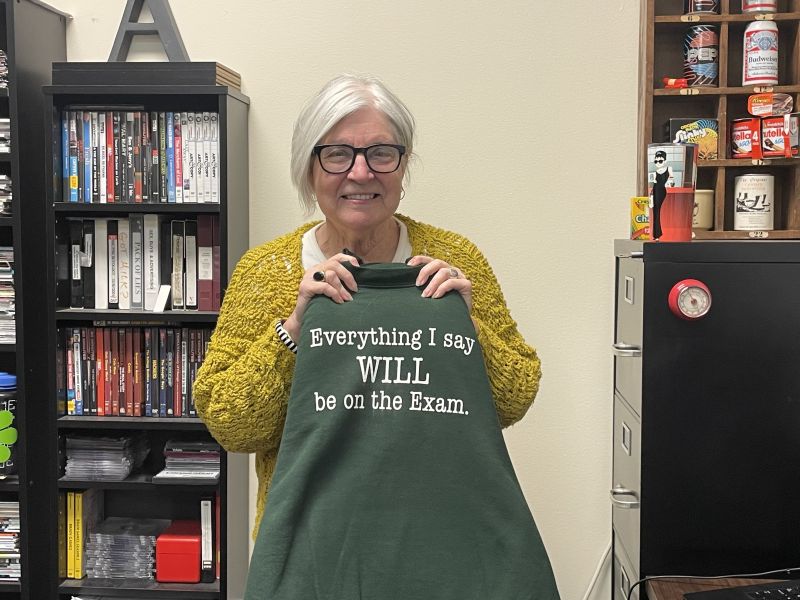Share this Story
From the Shadow of Three Mile Island to a Young College on the Rise
Dr. Linda Ferguson reflects on a life of purpose as she retires from Virginia Wesleyan
University News | May 12, 2025
In the spring of 1979, Linda Ferguson was a young high school teacher in central Pennsylvania, preparing her students for prom and final exams. Life seemed normal—until it wasn’t. 
Just around the corner from her home, a crisis was unfolding at the Three Mile Island Nuclear Generating Station, where a partial meltdown at Reactor 2 would become the most serious accident in U.S. commercial nuclear history. Without much warning, civil authorities began placing evacuation orders on the doors of homes, including hers.
“We had to evacuate very quickly,” she recalled. “We were terrified. We didn’t know what was happening at first, but we knew something was wrong. Workers were going to the plant for their shifts, but they weren’t coming home.”
The prom was canceled. Streets emptied. And long after the worst had passed, worry lingered. Radiation monitoring stations remained active in the town square, and Ferguson’s doctor urged her to tell every physician she saw for the rest of her life about her exposure.
That terrifying chapter could have defined her. Instead, it deepened her gratitude for the life that followed.
“I’ve had a long, fulfilling career, and I’ve been very fortunate,” said Dr. Ferguson, now preparing to retire after 38 years as a professor of Management, Business, and Economics at Virginia Wesleyan University. “I’m thankful for every moment.”
Shortly after the incident, she moved to Suffolk, Virginia, with her then-fiancé and resumed teaching—first in public schools, then at Paul D. Camp Community College. She earned her doctorate from the College of William and Mary and, in 1987, joined the faculty of Virginia Wesleyan.
“It was a very different place back then,” she said with a smile. “There were fewer faculty, and we taught a lot of classes. But we were close—we were one faculty. Many of us spent long hours on campus, often eating all three meals together at the old Eggleston Cafeteria.”
Dr. Ferguson has seen the University evolve through every major milestone—from the adoption of a four-credit-hour system to the transition from a college to a university. She points to 2002 as a turning point, when the opening of the Jane P. Batten Student Center raised the bar for campus life.
“You’d walk down the hall and think you were in some luxurious shopping mall,” she said. “It even had a pool, for heaven’s sake!”
She’s proud of the progress that followed—state-of-the-art additions like the Greer Environmental Sciences Center, a joint venture with the Virginia Museum of Contemporary Art currently under construction, and the growing reach of Virginia Wesleyan’s academic and global programs.
“We have become what we set out to become,” she reflected. “We couldn’t grow up overnight. It takes time, and now I think we’ve arrived.”
Her colleagues agree—and say her departure marks the end of an era.
Dr. Kathy Merlock Jackson, Professor of Communication, noted that Ferguson’s teaching career spanned every level and format imaginable. “Over a career that has spanned a half-century, Linda has taught it all—high school, community college, undergraduate, graduate, face-to-face, and online,” she said. “She is not only a remarkable educator but also a lifelong mentor and friend to many of her students.”
Provost and Vice President Dr. Deirdre Gonsalves-Jackson echoed that sentiment: “She didn’t just teach marketing classes, she modeled them with wisdom, clarity, and care. She has left an indelible impression on Virginia Wesleyan, and we are all better for having walked this journey with her.”
For Dr. Ferguson, the journey was never guaranteed—but every step, from a nuclear crisis to the lecture hall, has been a gift. “I’ve always appreciated the path I was able to take,” she said. “It’s been a joy to be part of this community.”

